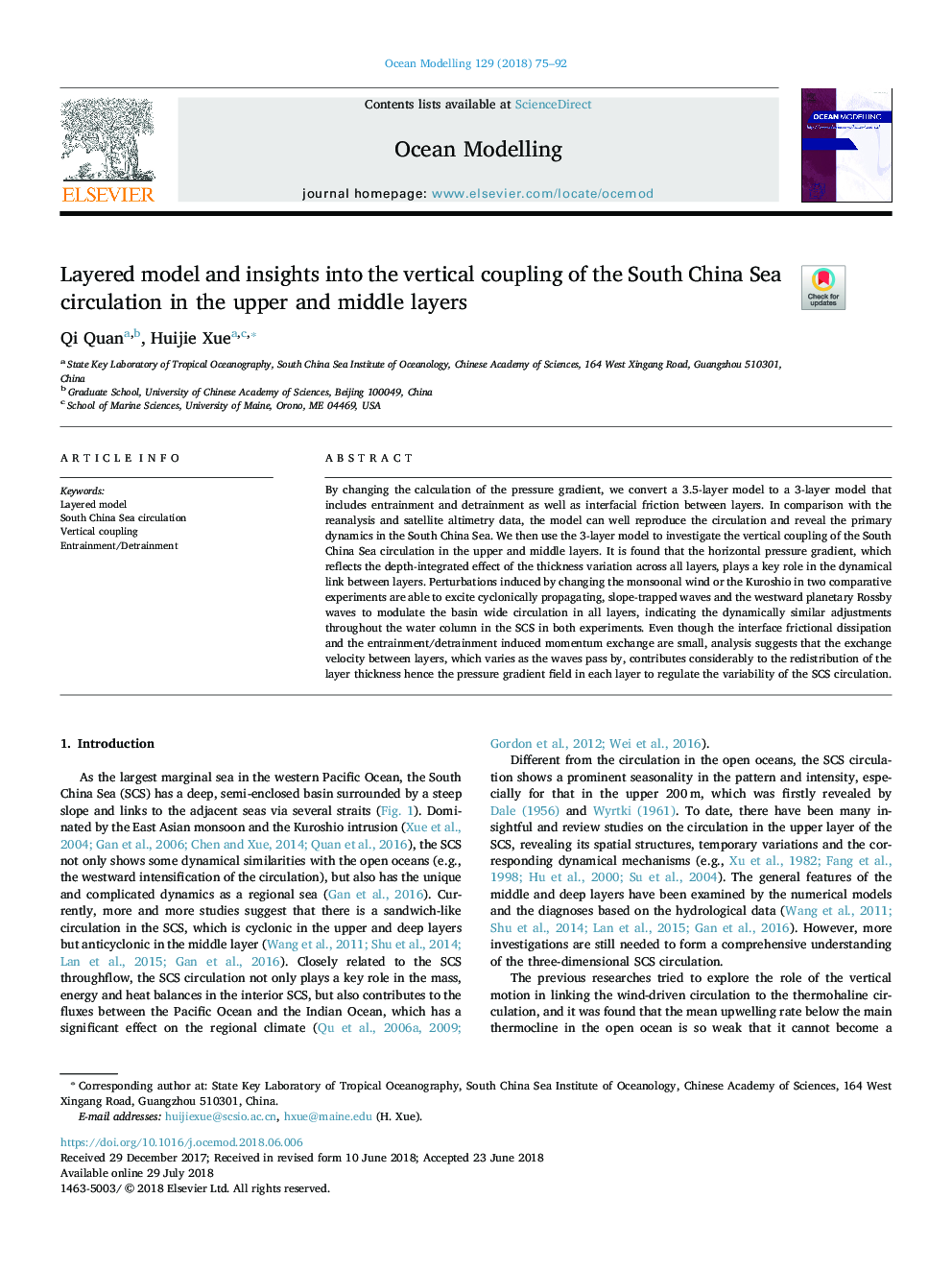| Article ID | Journal | Published Year | Pages | File Type |
|---|---|---|---|---|
| 8886481 | Ocean Modelling | 2018 | 18 Pages |
Abstract
By changing the calculation of the pressure gradient, we convert a 3.5-layer model to a 3-layer model that includes entrainment and detrainment as well as interfacial friction between layers. In comparison with the reanalysis and satellite altimetry data, the model can well reproduce the circulation and reveal the primary dynamics in the South China Sea. We then use the 3-layer model to investigate the vertical coupling of the South China Sea circulation in the upper and middle layers. It is found that the horizontal pressure gradient, which reflects the depth-integrated effect of the thickness variation across all layers, plays a key role in the dynamical link between layers. Perturbations induced by changing the monsoonal wind or the Kuroshio in two comparative experiments are able to excite cyclonically propagating, slope-trapped waves and the westward planetary Rossby waves to modulate the basin wide circulation in all layers, indicating the dynamically similar adjustments throughout the water column in the SCS in both experiments. Even though the interface frictional dissipation and the entrainment/detrainment induced momentum exchange are small, analysis suggests that the exchange velocity between layers, which varies as the waves pass by, contributes considerably to the redistribution of the layer thickness hence the pressure gradient field in each layer to regulate the variability of the SCS circulation.
Keywords
Related Topics
Physical Sciences and Engineering
Earth and Planetary Sciences
Atmospheric Science
Authors
Qi Quan, Huijie Xue,
